 The decade started in dramatic fashion for the BBFC with the submission of Tinto Brass' Caligula. The film achieved notoreity in the USA and arrived in the UK with the reputation of being 'the most controversial film of the eighties'. All sexually explicit material was removed in order to conform with Customs regulations (specifically the Customs Act 1876), and further cuts made to material which was potentially actionable under the Obscene Publications Act - the later including sexually violent material. The cut film was then viewed again by the Board, who had already indicated that further cuts to sex and violence would be necessary in order to secure a nation-wide release under BBFC 'X' category standards.
The decade started in dramatic fashion for the BBFC with the submission of Tinto Brass' Caligula. The film achieved notoreity in the USA and arrived in the UK with the reputation of being 'the most controversial film of the eighties'. All sexually explicit material was removed in order to conform with Customs regulations (specifically the Customs Act 1876), and further cuts made to material which was potentially actionable under the Obscene Publications Act - the later including sexually violent material. The cut film was then viewed again by the Board, who had already indicated that further cuts to sex and violence would be necessary in order to secure a nation-wide release under BBFC 'X' category standards. Throughout the decade there were a number of films involving gangland characters. 1981 saw the release of Tom Clegg's McVicar, a criminal biopic passed 'X'; and John Mackenzie's
 The Long Good Friday, the story of a criminal determined to preserve his manor against incursions by the IRA, also passed 'X'. This has remained '18' on video since 1987, with the most recent classification in 2008. Neil Jordan's Mona Lisa, was passed '18' in 1986, with Bob Hoskins playing the role of chauffeur to a prostitute. David Green's Buster, passed '15' in 1988, told the story of Great Train Robber 'Buster' Edwards on the run from the law. The decade concluded with Peter Medak's tale of infamous twin gangland figures, The Krays, passed '18', after cuts to an horrific mutilation scene.
The Long Good Friday, the story of a criminal determined to preserve his manor against incursions by the IRA, also passed 'X'. This has remained '18' on video since 1987, with the most recent classification in 2008. Neil Jordan's Mona Lisa, was passed '18' in 1986, with Bob Hoskins playing the role of chauffeur to a prostitute. David Green's Buster, passed '15' in 1988, told the story of Great Train Robber 'Buster' Edwards on the run from the law. The decade concluded with Peter Medak's tale of infamous twin gangland figures, The Krays, passed '18', after cuts to an horrific mutilation scene. Another film based on real-life was Michael Caton-Jones' Scandal, an account of the Profumo affair, a political scandal of the 1960s. Although for some the events were considered too recent for comfort, the problem for the BBFC was of a different kind. An orgy scene revealed the presence of an erect penis in the backgound of the shot. The image was obscured by soft-focus lighting and the film released with an '18' certificate.
Another film based on real-life was Michael Caton-Jones' Scandal, an account of the Profumo affair, a political scandal of the 1960s. Although for some the events were considered too recent for comfort, the problem for the BBFC was of a different kind. An orgy scene revealed the presence of an erect penis in the backgound of the shot. The image was obscured by soft-focus lighting and the film released with an '18' certificate.The first of the Rambo series, First Blood (Ted Kotcheff), was passed '15' uncut in 1982, and the second, George Pan Cosmatos' Rambo - First Blood Part II was passed '15' uncut in 1985. However, Rambo III was cut in 1988 to obtain an '18' certificate. In addition to a horse-fall removed under the terms of the Cinematograph Films (Animals) Act 1937, the violence was reduced by the excision of spatter shots, and cuts were made to counteract the glamorisation of weapons which constituted a significant classification issue.
John Milius' Conan The Barbarian required cuts to a sex scene between Conan and a serpent-woman, and to remove horse-falls, for an 'AA' category in 1982. The second Conan film, Richard Fleischer's Conan The Destroyer also required horse-fall and animal cruelty cuts in 1984.
 The decade also saw the establishment of the 'stalk and slash' genre with the Friday 13th series of films, with parts I and II passed 'X' uncut on film in 1980 and 1981 respectively. Part III was also passed 'X' uncut on film in 1982, but with two cuts to violence/horror to obtain an '18' on video in 1987.
The decade also saw the establishment of the 'stalk and slash' genre with the Friday 13th series of films, with parts I and II passed 'X' uncut on film in 1980 and 1981 respectively. Part III was also passed 'X' uncut on film in 1982, but with two cuts to violence/horror to obtain an '18' on video in 1987.1981 saw the second in the Halloween series passed 'X' uncut on film, but a scene where a woman was scalded to death in a jacuzzi was reduced for an '18' video release in 1990.
The development of the video recorder created new anxieties about the home viewing of feature films. Legally, there was no requirement that videos should be classified, which meant that films that had not been approved by the BBFC or which were suitable for adults only, were falling into the hands of children. In particular the tabloid press led a campaign against so called 'video nasties'. This term was not always clearly defined, but there were 70 titles that had either been prosecuted by the DPP under the Obscene Publications Act, or were awaiting prosecution. Some of these were horror films that had never been submitted to the BBFC. Others had been cut for their cinema release, and the video versions sometimes included restored cuts. The outcome of this concern was new legislation, introduced as a private member’s Bill by Conservative MP, Graham Bright. The Video Recordings Act 1984, makes it an offence for a video work to be supplied if it has not been classified, or to supply a classified work to a person under the age specified in the certificate.
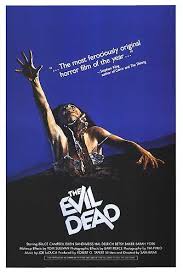
No record of the decade of the so-called 'video nasties' would be complete without mention of Sam Raimi's zombie film, The Evil Dead. This was submitted in 1982 and required 49 seconds of cuts to violence and horror. The video was placed on the Director of Public Prosecution's (DPP) list and seized, with a number of retailers charged under the Obscene Publications Act - although the work was never tested in court as the retailers pleaded guilty. In 1985 the distributor, Palace Video, was prosecuted and acquitted. The film cuts were increased for the video version in 1990 as a precautionary measure against possible future prosecution, but in 2000 the full version was passed '18' on video.
When former 'video nasties', they are examined under current Guidelines, and their legal history considered. It is usually possible to make cuts to ensure a modern release, although many of them continue to test the Guidelines for sexual violence. 1982 - Review of the category system
- 'A' was changed to 'PG'
- 'AA' was changed to '15' and
- X' became '18'.
Further changes to the category system in the 80s
In 1985: 'Uc' was introduced for video only, to identify works suitable for very young children to watch alone.
 In 1989: '12' introduced on film, to bridge the huge gap between 'PG' and '15'. This was extended to video in 1994. The first film to be given a '12' rating was Batman
In 1989: '12' introduced on film, to bridge the huge gap between 'PG' and '15'. This was extended to video in 1994. The first film to be given a '12' rating was Batman The seventies did indeed see the release of a number of provocative films, in particular those that linked sex and violence, for example
The seventies did indeed see the release of a number of provocative films, in particular those that linked sex and violence, for example  during the seventies, for example Ken Russell’s
during the seventies, for example Ken Russell’s  er the viewer is encouraged to enjoy the pain of victims of violence, and, often, sexual violence. Prior to 1977 the Obscene Publications Act did not apply to cinema films and films were judged on the basis of whether any individual scene might be considered 'indecent', regardless of context. However, the extension of the OPA to films in 1977 gave the BBFC more latitude when considering depictions of sex in films since they now had to be considered 'as a whole'. Therefore, the BBFC was able to waive, in 1978, a cut for sexual explicitness made in 1973 to
er the viewer is encouraged to enjoy the pain of victims of violence, and, often, sexual violence. Prior to 1977 the Obscene Publications Act did not apply to cinema films and films were judged on the basis of whether any individual scene might be considered 'indecent', regardless of context. However, the extension of the OPA to films in 1977 gave the BBFC more latitude when considering depictions of sex in films since they now had to be considered 'as a whole'. Therefore, the BBFC was able to waive, in 1978, a cut for sexual explicitness made in 1973 to 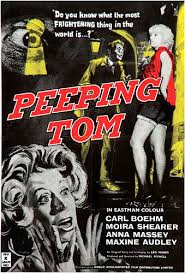

 of the Long Distance Runner
of the Long Distance Runner By 1966, Lewis Gilbert's
By 1966, Lewis Gilbert's  that it contained a 'basically moral theme' in spite of some misgivings at the Board about the abortion theme. Attitiudes to sexuality were on the change in the wake of the 1957 Wolfenden Report which recommended a relaxation of the laws concerning homosexuality, although no new legislation was to appear for another ten years. Trevelyan claimed that the BBFC had never banned the subject of homosexuality from the screen but 'the subject was one that would probably not be acceptable to the British audience'. Basil Dearden's
that it contained a 'basically moral theme' in spite of some misgivings at the Board about the abortion theme. Attitiudes to sexuality were on the change in the wake of the 1957 Wolfenden Report which recommended a relaxation of the laws concerning homosexuality, although no new legislation was to appear for another ten years. Trevelyan claimed that the BBFC had never banned the subject of homosexuality from the screen but 'the subject was one that would probably not be acceptable to the British audience'. Basil Dearden's  created a stir because of its treatment of sexual matters . After extensive consultation with the distributor and the director, Trevelyan passed the film 'X' with 35 seconds of cuts to sex scenes. The decade also saw the establishment of the
created a stir because of its treatment of sexual matters . After extensive consultation with the distributor and the director, Trevelyan passed the film 'X' with 35 seconds of cuts to sex scenes. The decade also saw the establishment of the 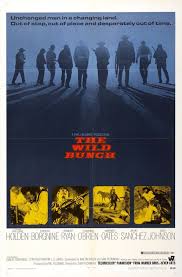
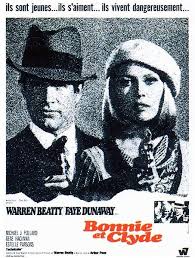


 box-office success. Only one cut was made, not to violence but to male nudity. In the decade of tuning in, turning on, and dropping out,
box-office success. Only one cut was made, not to violence but to male nudity. In the decade of tuning in, turning on, and dropping out,  Controversial subjects on film were accommodated in the UK under the new 'X' category, introduced in 1951and incorporating the former advisory 'H' category given to horror films. As the growth of television ownership eroded the adult/family cinema audience, films like
Controversial subjects on film were accommodated in the UK under the new 'X' category, introduced in 1951and incorporating the former advisory 'H' category given to horror films. As the growth of television ownership eroded the adult/family cinema audience, films like 


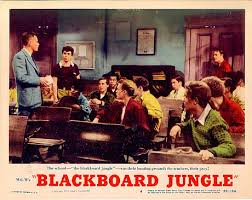


 At the end of the decade came
At the end of the decade came 